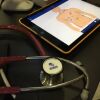With recent emergencies like Superstorm Sandy fresh in everyone’s mind, the subject of evacuation tools has been a hot topic.
How to move a lot of people in a hurry is a big challenge. I heard from rescuers on scene that evacuating New York’s Bellevue Hospital was a huge undertaking.
It is difficult for many departments to afford all the resources required to make a rapid evacuation possible. There are also a lot of specific challenges for each individual situation, which often prevents any single device from being the single solution.
What I’ve learned is there are many individual solutions. For example, if you are on uneven terrain, you will need a certain type of device.
If you are evacuating a lot of people lying down, that’s a different problem. If you have to move people down stairs or vertically, that is yet another. Moving bariatric patients is one more.
Often we are left to improvise. Many patients have been dragged out on sheets, blankets, or carried on backboards. Stair chairs can be very useful. Portable stretchers like the Reeves Mass Casualty or Reeves Sleeve and Sked Stretcher are all proven performers.
Another established evacuation product is the Traverse Rescue Stretcher. It was designed for both horizontal and vertical casualty evacuations. The compact roll-up design makes it ideal for high angle and confined space rescue, wilderness and helicopter operations.
Inexpensive fabric stretchers like the Go Stretcher are very compact to store. This allows you to keep a lot more of them ready. The next step up is the pole stretcher, maybe the oldest transport device. Pole stretchers are readily available from Ferno and Junkin.
The most compact pole stretcher is the EMS Compact. This more easily deployed version has four folding points. This allows the stretcher to fit in a small backpack.
Here a few of the more interesting new evacuation products I’ve seen lately. Each meets a specific need and has its own advantages and disadvantages.
I first reported on the Easy Rescue Buddy & Buddy Pro earlier this year. It is very small and lightweight rescue harness. You can easily pack it in a larger pack or response bag. It allows two rescuers to carry a patient using mainly their legs. It is perfect for Tactical Rescue, Disaster Caches, and Military Medics.
With a little practice, it’s very easy to use as long as you have a reasonably healthy partner and non-obese patient.
Buddy & Buddy Pro are made by Easy Rescue and were developed with help from the IDF. The hands-free potential allows two soldiers to carry a third while operating their weapons if need be.
For patients that need to be evacuated lying down or when stairs must be descended, they’re a few new innovative products.
One that intrigues me is the LION Tactical Stretcher. It is basically a hammock with handles. It weighs just 14 ounces and stores in a 3.5" x 8" bag. Designed for tactical use, it looks fast and easy to use when you have enough manpower.
The Albac Mat is a lightweight drag stretcher with a corrugated plastic bottom. The drag strap allows you to pull a victim across the floor and easily descend stairs.
It is remarkably lightweight and compact. One person can operate it, which could improve speed of the evacuation. For hospital and nursing home evacuations, it would be very useful.
The Bariatric Evacmat works much the same way, but on heavier patients up to 800 pounds. It has the advantage of multiple height grip handles for safer lifting posture. The more rigid bottom greatly reduces friction while the extended sides safely wrap the patient inside.
Another is the HoverTrans Safety-Slide. The Safety Slide lets you use the patient’s mattress and features a low-friction Teflon-infused sliding surface. A smart hospital might just leave one under every bed in the facility.
A very cool high-rise vertical evacuation product is the Skysaver. They have different models for different purposes. One is for self-rescue from a high-rise and another can be wall-mounted and evacuate multiple people.
If I lived in a high-rise, it would be on my short-list. It allows about anybody to safely rappel. It is a long line on a reel that is hydraulically controlled to descend vertically at a safe rate automatically. Check out the amazing YouTube video here.
These are but a handful of the many new evacuation tools available for EMS. What is important is to pre-plan and evaluate your most likely type of evacuations. Then do some research and evaluate the products specific to your risk profile. The good news is that today there are a lot of creative and functional solutions.













